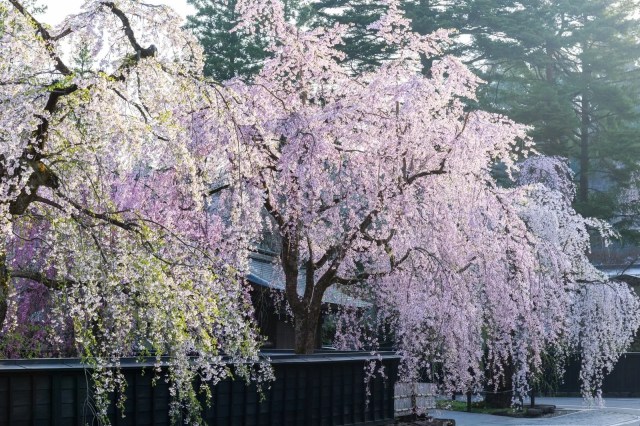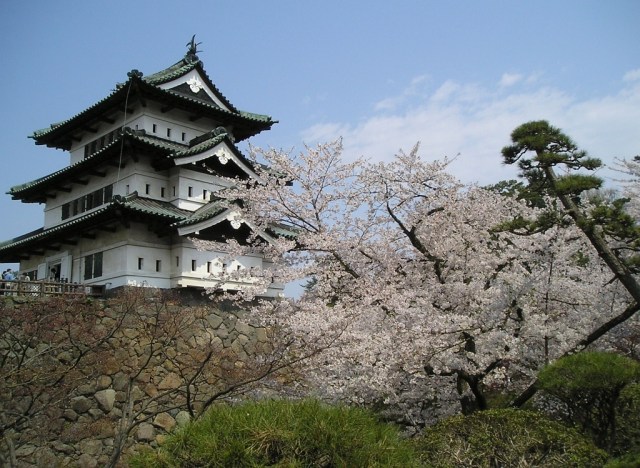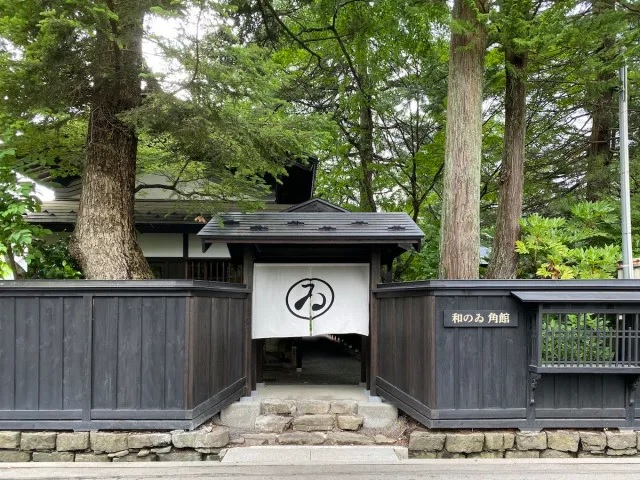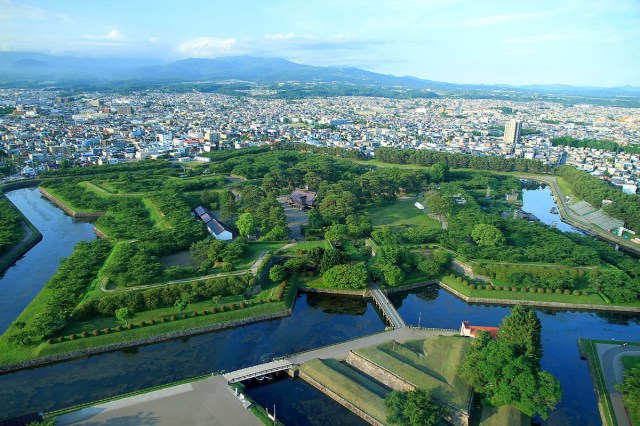
Go east, and north, Japan travelers!
The recent price increase for the all-across-Japan Japan Rail Pass may turn out to be, in some ways, a blessing in disguise for travelers. Yes, it is sad that the deeply discounted method for zipping all across the country is now prohibitively expensive for most itineraries. The potential upside, though, is that focusing on one or two regions of Japan, instead of trying to see everything in one trip, can often be the more enjoyable and memorable way to travel, and there are still some great regional rail passes available at very affordable prices.
The most recently announced one comes from two divisions of Japan Railway Company, specifically JR East and JR Hokkaido. They aren’t trying to be clever in the naming, either, as it’s just called the “Hokkaido and East Japan Pass.”
That simplicity is appropriate, though, as the pass gives you seven days of unlimited rides on any and all normal and express-class trains operated by JR East and JR Hokkaido. JR East covers pretty much the entire eastern half of Honshu, the main island of Japan. That includes Tokyo and all of the Kanto region, stretches west to the coastal hot spring town of Atami in Shizuoka Prefecture, and northwest through the Japan alps and Nagano into Niigata in the Hokuriku region. The JR East network also goes all the way up to the tip of the northeastern Tohoku region, including Sendai, Akita, and Aomori. JR Hokkaido, of course, services the island prefecture of Hokkaido, off the northern coast of Tohoku.
▼ Aomori’s Hirosaki Castle
In other words, the Hokkaido and East Japan Pass covers a lot of ground, easily enough for any Japan trip in which you’re taking the time to appreciate the sights, and especially if you want to get a little off the beaten path of the standard Tokyo-Kyoto-Osaka route. The pass even includes unlimited rides on Aoimori Railway Line, Iwate Galaxy Railway Line, and Hokuetsu Express Corporation (in Niigata) regular and express-class trains.
▼ Akita’s Kakunodate district is filled with beautifully preserved samurai residences (some of which have been converted into hotels), and the town is especially lovely in cherry blossom season, as seen at the top of this article.
The Hokkaido and East Japan Pass is priced at 11,330 yen (US$77) for adults and 5,660 yen for children, and since it’s valid for seven days, it should pay for itself pretty easily if you’re doing even a moderate amount of moving around as you explore east Honshu and Hokkaido.
There is a little bit of fine print to be aware of, though, regarding JR’s express-train classifications and nomenclature. The Hokkaido and East Japan Pass provides unlimited rides on standard (futsuu) and regular express (kaisoku) trains. It doesn’t, however, include “special express” trains, i.e. the fanciest, fastest express trains that involve extra fees over the basic JR fares, such as the Shinkansen. As such, the pass is likely best suited to those of you who’ve built a little extra time into your schedule, or are planning several short or mid-length hops in order to thoroughly explore the region, as opposed to travelers who’re planning a single long-distance dash to a destination where they’ll be spending the rest of the week without moving around very much after that.
There is a semi-exception to the Shinkansen exclusion, though. Since this is the Hokkaido and East Japan Pass, not the Hokkaido or East Japan Pass, it does include a slightly discounted way to get from Honshu to Hokkaido, which hare connected by the Shinkansen. Usually, when travelling by Shinkansen, the fare you pay consists of two parts: the base fare between your departure and destination stations, plus a special express/Shinkansen surcharge. For Hokkaido and East Japan Pass holders taking the Shinkansen between Shin-Aomori Station (the northernmost Shinkansen station in Tohoku) and Shin Hakodate Hokuto Station on Hokkaido, though, the base fare will be waived (i.e. pass holders will only need to pay the special express surcharge) for a standing/non-reserved Shinkansen ticket.
▼ Hakodate’s star-shaped Goryokaku fort
The Hokkaido and East Japan Pass will be on sale from February 20 to April 16, available at major JR East and Hokkaido stations, ticket kiosks, and travel agencies. The pass can be used for seven consecutive days between March 1 and April 22, making it a viable way to chase the cherry blossoms as their staggered blooming continues northward (the projected blossoming dates are all within the pass’ usable time frame). Meanwhile, if your Japan travel desires are currently focused on the Hokuriku region specifically, there’s a new rail pass for there too.
Source: JR East via IT Media
Top image: Pakutaso
Insert images: Wikipedia/Binabik, SoraNews24, Wikipedia/京浜にけ
● Want to hear about SoraNews24’s latest articles as soon as they’re published? Follow us on Facebook and Twitter!




 New JR Shinkansen-inclusive rail pass is a huge bargain, great way to help out a region in need
New JR Shinkansen-inclusive rail pass is a huge bargain, great way to help out a region in need All-you-can-ride Shinkansen deal coming to Japan for a limited time
All-you-can-ride Shinkansen deal coming to Japan for a limited time Travel tip! Japan Railways to offer awesome new three-day unlimited pass for Tokyo and east Japan
Travel tip! Japan Railways to offer awesome new three-day unlimited pass for Tokyo and east Japan Japan’s best train pass, the Japan Rail Pass, finally being made available for purchase online
Japan’s best train pass, the Japan Rail Pass, finally being made available for purchase online Japan Railway to allow dogs to ride without cages on special Tokyo-Izu train
Japan Railway to allow dogs to ride without cages on special Tokyo-Izu train Japan’s new difficult-to-drink-from beer glass protects your liver, but it’s a brutal experience
Japan’s new difficult-to-drink-from beer glass protects your liver, but it’s a brutal experience Demon Slayer: Kimetsu no Yaiba gets new roller coaster attractions and food at Universal Studios Japan
Demon Slayer: Kimetsu no Yaiba gets new roller coaster attractions and food at Universal Studios Japan Come play hide-and-seek on a deserted Japanese island this August and November
Come play hide-and-seek on a deserted Japanese island this August and November New Pokémon ice cream, dessert drinks, and cool merch coming to Baskin-Robbins Japan【Pics】
New Pokémon ice cream, dessert drinks, and cool merch coming to Baskin-Robbins Japan【Pics】 Infographic shows how working culture differs across the globe
Infographic shows how working culture differs across the globe New Nintendo Lego kit is a beautiful piece of moving pixel art of Mario and Yoshi【Photos】
New Nintendo Lego kit is a beautiful piece of moving pixel art of Mario and Yoshi【Photos】 Real Buddhist monk plays Super Mario Bros., recites prayers every time he kills an enemy【Video】
Real Buddhist monk plays Super Mario Bros., recites prayers every time he kills an enemy【Video】 We check out the local flavors of the commonly confused Ome and Aomi areas of Tokyo in one day
We check out the local flavors of the commonly confused Ome and Aomi areas of Tokyo in one day Restaurant Yoshibei is crazy in the best way: A pork cutlet set with a side of pork cutlet bowl
Restaurant Yoshibei is crazy in the best way: A pork cutlet set with a side of pork cutlet bowl W.T.F. Japan: Top 5 craziest Japanese certification exams 【Weird Top Five】
W.T.F. Japan: Top 5 craziest Japanese certification exams 【Weird Top Five】 Nintendo history you can feel – Super NES, N64, and GameCube controllers become capsule toys
Nintendo history you can feel – Super NES, N64, and GameCube controllers become capsule toys Hello, cosmetics! Clinique teams up with Hello Kitty this summer for first-time collaboration
Hello, cosmetics! Clinique teams up with Hello Kitty this summer for first-time collaboration “The most Delicious Cup Noodle in history” – Japan’s French Cup Noodle wins our heart【Taste test】
“The most Delicious Cup Noodle in history” – Japan’s French Cup Noodle wins our heart【Taste test】 Starbucks releases a cute Frappuccino and Unicorn Cake…but not in Japan
Starbucks releases a cute Frappuccino and Unicorn Cake…but not in Japan Kyoto Tower mascot termination reveals dark side behind cute Japanese characters
Kyoto Tower mascot termination reveals dark side behind cute Japanese characters McDonald’s Japan’s Soft Twist Tower: A phantom ice cream only sold at select branches
McDonald’s Japan’s Soft Twist Tower: A phantom ice cream only sold at select branches Yabai Ramen: What makes this Japanese ramen so dangerous?
Yabai Ramen: What makes this Japanese ramen so dangerous? Finally! Nintendo Japan expands Switch 8-bit controller sales to everybody, Online member or not
Finally! Nintendo Japan expands Switch 8-bit controller sales to everybody, Online member or not Japanese government wants to build luxury resorts in all national parks for foreign tourists
Japanese government wants to build luxury resorts in all national parks for foreign tourists To combat declining birth rate, Japan to begin offering “Breeding Visas” to foreigners
To combat declining birth rate, Japan to begin offering “Breeding Visas” to foreigners 10 things you should buy at 7-Eleven in Japan
10 things you should buy at 7-Eleven in Japan Studio Ghibli releases anime heroine cosplay dresses that are super comfy to wear
Studio Ghibli releases anime heroine cosplay dresses that are super comfy to wear Woman charged for driving suitcase without a license in Osaka
Woman charged for driving suitcase without a license in Osaka Studio Ghibli unveils My Neighbour Totoro miniature house model
Studio Ghibli unveils My Neighbour Totoro miniature house model Kyoto experiencing problems with foreign tourists not paying for bus fares, but not on purpose
Kyoto experiencing problems with foreign tourists not paying for bus fares, but not on purpose Fighting mild hunger with a Japanese soda that turns into jelly in the stomach【Taste test】
Fighting mild hunger with a Japanese soda that turns into jelly in the stomach【Taste test】 Studio Ghibli’s Howl’s Moving Castle tapestry unveiled in Japan for first time
Studio Ghibli’s Howl’s Moving Castle tapestry unveiled in Japan for first time McDonald’s new Happy Meals offer up cute and practical Sanrio lifestyle goods
McDonald’s new Happy Meals offer up cute and practical Sanrio lifestyle goods Sales of Japan’s most convenient train ticket/shopping payment cards suspended indefinitely
Sales of Japan’s most convenient train ticket/shopping payment cards suspended indefinitely Sold-out Studio Ghibli desktop humidifiers are back so Totoro can help you through the dry season
Sold-out Studio Ghibli desktop humidifiers are back so Totoro can help you through the dry season Japanese government to make first change to romanization spelling rules since the 1950s
Japanese government to make first change to romanization spelling rules since the 1950s Foreigner’s request for help in Tokyo makes us sad for the state of society
Foreigner’s request for help in Tokyo makes us sad for the state of society Ghibli founders Toshio Suzuki and Hayao Miyazaki contribute to Japanese whisky Totoro label design
Ghibli founders Toshio Suzuki and Hayao Miyazaki contribute to Japanese whisky Totoro label design Doraemon found buried at sea as scene from 1993 anime becomes real life【Photos】
Doraemon found buried at sea as scene from 1993 anime becomes real life【Photos】 Tokyo’s most famous Starbucks is closed
Tokyo’s most famous Starbucks is closed Princesses, fruits, and blacksmiths: Study reveals the 30 most unusual family names in Japan
Princesses, fruits, and blacksmiths: Study reveals the 30 most unusual family names in Japan Free Shinkansen tickets for kids travelling with parents during special JR promotion
Free Shinkansen tickets for kids travelling with parents during special JR promotion Free Wi-Fi now available on Tohoku Shinkansen, inside Tokyo’s Yamanote Line stations
Free Wi-Fi now available on Tohoku Shinkansen, inside Tokyo’s Yamanote Line stations Want to choose the name of Tokyo’s most important new station? Here’s your chance!
Want to choose the name of Tokyo’s most important new station? Here’s your chance! Huge price hike for Japan Rail Pass triggers huge drop in foreign travelers who’ll buy it【Survey】
Huge price hike for Japan Rail Pass triggers huge drop in foreign travelers who’ll buy it【Survey】 Japan’s new random-destination die-roll train tickets — Amazing bargain for just 36 bucks
Japan’s new random-destination die-roll train tickets — Amazing bargain for just 36 bucks New ultra-stylish, extra-traditional Shinkansen has tatami floors, foot baths
New ultra-stylish, extra-traditional Shinkansen has tatami floors, foot baths Get the most out of your visit to Japan with these tourist-only deals 【Ninja Life Skills】
Get the most out of your visit to Japan with these tourist-only deals 【Ninja Life Skills】 Foreign passenger shoves conductor on one of the last full runs for Japan’s Thunderbird train
Foreign passenger shoves conductor on one of the last full runs for Japan’s Thunderbird train All Japan Railway Tokyo trains to finally get security cameras starting this summer
All Japan Railway Tokyo trains to finally get security cameras starting this summer Japanese boxed lunches pulling into France at authentic bento stand opening in Paris station
Japanese boxed lunches pulling into France at authentic bento stand opening in Paris station Hello Kitty Shinkansen bullet train to debut in Japan this summer
Hello Kitty Shinkansen bullet train to debut in Japan this summer Shinkansen will require reservations for large suitcases, charge penalty fees for those without
Shinkansen will require reservations for large suitcases, charge penalty fees for those without Faster! Japan’s Shinkansen to get speed boost along Tohoku route
Faster! Japan’s Shinkansen to get speed boost along Tohoku route Shinkansen conductor caught playing GPS smartphone game on bullet train…for TEN years
Shinkansen conductor caught playing GPS smartphone game on bullet train…for TEN years Japan’s newest Shinkansen is world’s fastest gallery, packed with contemporary art inside and out
Japan’s newest Shinkansen is world’s fastest gallery, packed with contemporary art inside and out East Japan Railway abolishes skirts, ribbons in women’s uniforms to “eliminate gender difference”
East Japan Railway abolishes skirts, ribbons in women’s uniforms to “eliminate gender difference”
Leave a Reply